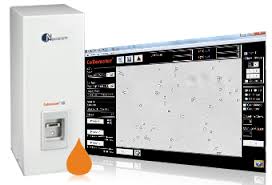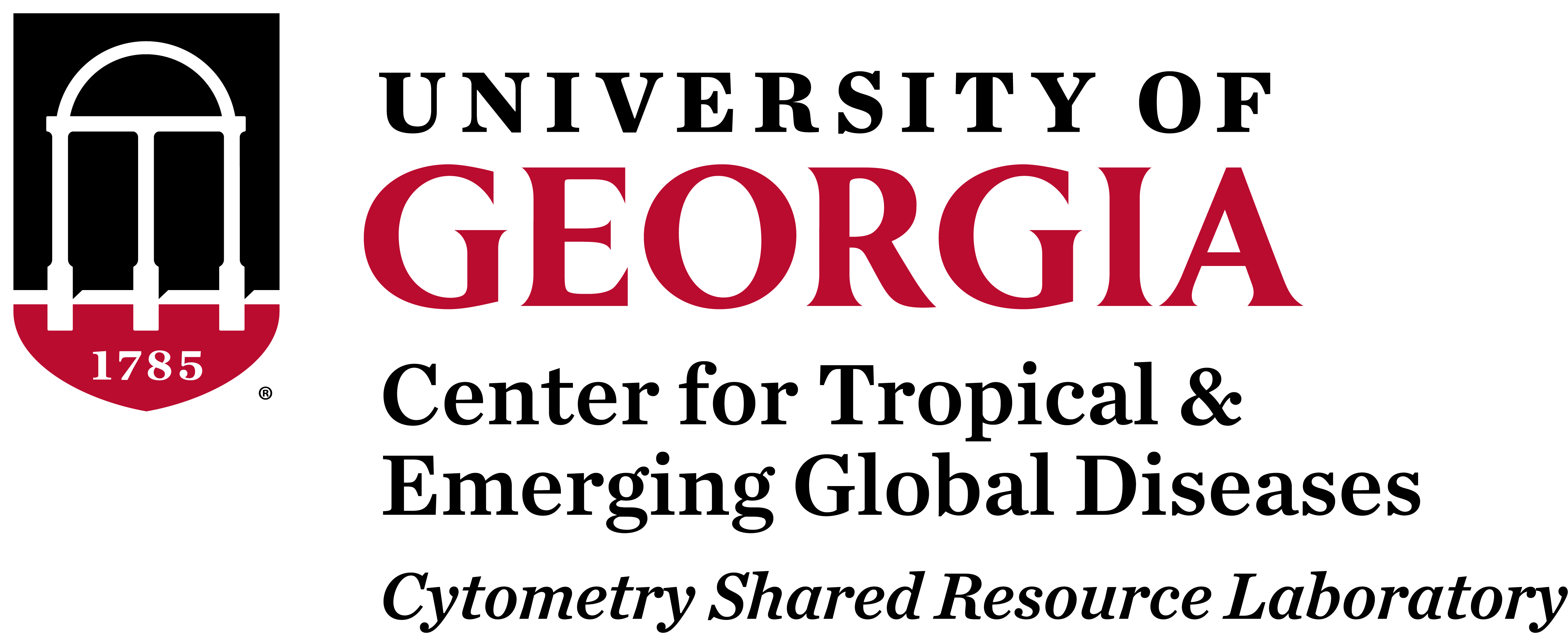Instruments
Schedule Use
Trained users may sign up to use any of the analyzers 24 hours a day/7 days a week by clicking here to login to the portal. The MoFlo Astrios cell sorter and the FACSAria Fusion are operated by laboratory personnel only. Contact Juan Bustamante for an appointment on the MoFlo Astrios and Celia Saney for an appointment on the FACSAria Fusion. All instruments are located in room S166 Paul D. Coverdell unless otherwise noted.
We recommend Fluorofinder for building panels to use for these instruments
Agilent Quanteon
The Quanteon (Agilent) analyzer has four laser excitation wavelengths, 405, 488, 561 and 640, that are capable of analyzing 25 parameters simultaneously. This unique cytometer uses siPMs (What is a siPM?) providing the latest in sensitivity of detection. The Quanteon can sample from any platform type plate (96 well, 384 well, 96 deep well, 12 well, etc.) or tube (1.5 ml Eppendorf or 5 ml round bottom) in an automated fashion. With its superior fluidics that provide pulse-free sample delivery the user can obtain absolute counts, without the use of expensive beads. This cytometer is useful for measuring fluorescent proteins that require yellow, 561 nm, excitation such as mCherry, mPlum and dsRed as well as high dimensional immunophenotyping. The Quanteon is designed to be user friendly and most investigators are comfortable with it after one or more training sessions. We have 2 Quanteon instruments available on campus: 1 in the Paul D. Coverdell location (contact Juan Bustamante for training) and 1 in the CVM (contact Jamie Barber for training).
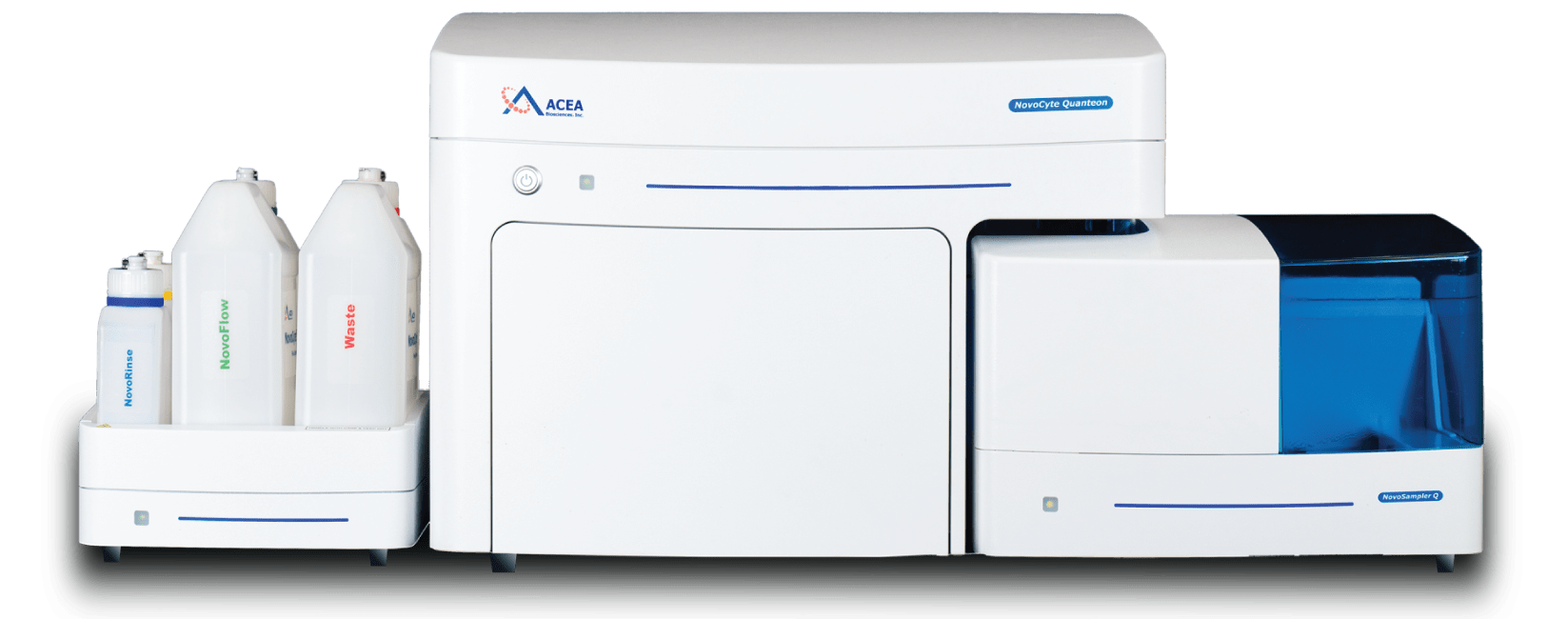
Cytek® Amnis® ImageStream®X Mk II Imaging Flow Cytometer
The ImageStream (Cytek Bioscience) is an imaging cytometer. This instrument combines the speed, sensitivity, and phenotyping abilities of flow cytometry with the detailed imagery and functional insights of microscopy. This unique combination enables a broad range of applications that would be impossible using either technique alone.
This instrument produces multiple high-resolution images of every cell directly in flow, including brightfield and darkfield (SSC), and up to 10 fluorescent markers (with 4 laser excitation – 405nm, 488nm, 561nm and 642nm) with sensitivity exceeding conventional flow cytometers. The ImageStream is designed to be user-friendly after 1-2 training sessions. Interested users should contact Juan Bustamante.
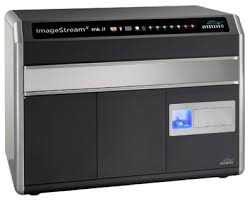
Beckman Coulter CytoFLEX
The CytoFLEX (Beckman Coulter) has four laser excitation wavelengths, 405, 488, 561 and 610, that are capable of analyzing 13 parameters simultaneously. This unique cytometer uses WDMs (What are WDMs?) and APDs (What are APDs? ) to increase sensitivity of detection. The CytoFLEX can sample from a 96 well plate and give you a concentration of cells without using beads. This cytometer is useful for measuring fluorescent proteins that require yellow, 561 nm, excitation such as mCherry, mPlum and dsRed. The CytoFLEX is designed to be user friendly and most investigators are comfortable with it after one or more training sessions. We have 2 CytoFLEX instruments available: 1 in the Paul D. Coverdell location and 1 in the CMM location, listed as CytoFLEX and CMM CytoFLEX respectively in FBS. Interested users should contact Juan Bustamante.
Cytek Aurora CS Cell Sorter
The Cytek Aurora CS (Cytek Bioscences) cell sorter purifies or enriches populations by sorting cells or particles based on a wide array of new fluorochrome combinations. It is a spectral cell sorter with up to five lasers 355, 405, 488, 561, or 640nm, three scattering channels, and 64 fluorescence channels. The Aurora system is highly flexible, intuitive and ultra-sensitive. The Cytek Aurora CS can sort at speeds up to 20,000 events/second and can sort single cells into multi-well platform. The Cytek Aurora CS is in a BSL2 Biosafety Cabinet for sorting infectious cells. Researchers interested in using the Cytek Aurora CS should contact Juan Bustamante to schedule a consultation.

Becton Dickinson FACS Melody
The FACS Melody (Becton Dickinson) cell sorter purifies or enriches populations by sorting cells or particles based on 10 different parameters (8 colors/2 scatter) using either or all of the following excitation wavelengths – 488, 561, 634. The FACS Melody can sort up to 4 populations in to 5 ml snap cap tubes, microcentrifuge tubes, slides or 96 well plates. This instrument is designed to be user-friendly after training. It is located in the Paul D. Coverdell location room S166 and researchers interested in using it should contact Juan Bustamante to schedule training.
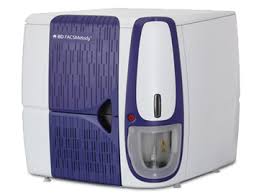
Becton Dickinson FACSAria Fusion
The FACSAria Fusion (Becton Dickinson) contains 4 lasers: red (640nm), yellow (561nm), blue (488nm) and violet (405nm). In its present configuration, the sorter can evaluate thirteen parameters (forward and side scatter plus eleven fluorescent channels). It has the ability to sort single cells into 6, 24, 48, 96- or 384-well plates, as well as bulk sorting into FACS tubes, eppendorf tubes, and conicals. This instrument also has an aerosol management system to eliminate the emission of aerosols generated during operation. In addition, the entire instrument is contained in a laminar flow biosafety cabinet that is certified annually. This instrument is recommended for users who need to sort infectious, BSL2 particles. The FACSAria Fusion is located in the CVI, room 1559 and researchers interested in using it should contact Celia Saney to schedule a consultation.

Bio-Rad Bio-Plex 3D
The Bio-Plex 3D suspension array system (Bio-Rad) is the next generation multiplexing platform based on xMAP technology. It has expanded multiplexing capability , can sample from 384 well plates and is an excellent choice for high-throughput testing for nucleic acid and protein applications.
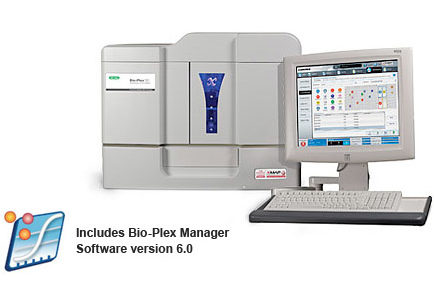
Bio-Rad S3
The (Bio-Rad) S3 cell sorter purifies or enriches populations by sorting cells or particles based on 6 different parameters (4 colors/2 scatter) using either or both of the following excitation wavelengths – 488 or 561 The S3 sorts in 2 directions in to either a 5 ml snap cap tube or microcentrifuge tube. This instrument is designed to be user-friendly after training. Researchers interested in using the S3 should contact Juan Bustamante to schedule training. Interested users should contact Juan Bustamante.

Cytek Aurora
The Cytek Aurora analyzer has 5 laser excitation wavelengths (UV, 405, 488, 561 and 640), 3 scatter detectors and 64 fluorescence detectors. This unique spectral cytometer uses proprietary high sensitivity Coarse Wavelength Division Multiplexing (CWDM) semiconductor detector arrays to enable more efficient spectrum capture for dyes emitting in the 365-829 nm range. The fluorescence from each fluorochrome is collected in every detector from every excitation to give a fluorescent signature. These signatures are then unmixed to give high resolution and sensitivity results for each cell or particle in an experiment. Unmixing technology can also account for autofluorescence – greatly enhancing dye separation in highly autoflourescent cells. Interested users should contact Juan Bustamante.
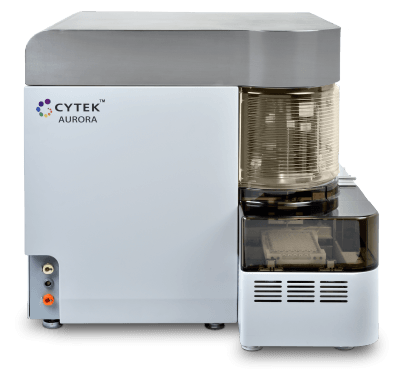
Malvern Panalytical NanoSight NS300
The NanoSight NS300 allows rapid analysis of the size, distribution and concentration of all types of nanoparticles from 10nm – 1 µm using a technology called NTA. Nanoparticle Tracking Analysis (NTA) utilizes the properties of both light scattering and Brownian motion. Interested users should contact Juan Bustamante.
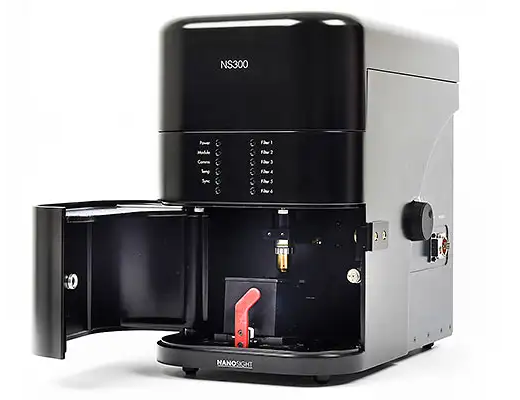
NanoFCM Nanoanalyzer
Nanoparticle analysis has become a powerful tool for life science, nanoscience and nanotechnology studies. The flow NanoAnalyzer can be used for the multiparameter characterization of natural and synthetic nanoparticles (7-1000 nm) at the single-particle level. Extracellular vesicles, mitochondria and other organelles, nanobacteria and viruses can all be detected using the Nanoanalyzer by combining light scattering and fluorescence excitation and emission. High-resolution distributions of particle size and biochemical properties can be acquired simultaneously in 1-2 minutes. The Nanoanalyzer is located in the Rhodes Center for Animal and Dairy Science, Room 424. Interested users should contact Dr. Steven Stice.
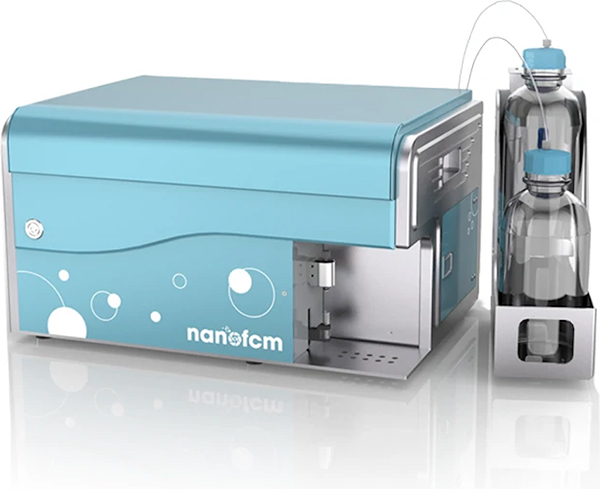
Nexcelom Bioscience Cellometer X2
The Cellometer uses bright field and fluorescence imaging combined with sophisticated image analysis software to yield accurate, hassle free calculations of everything from the basic cell count, size, and viability measurements. The instrument can count most common sample types, from cell lines to primary cells to yeast, algae, and blood platelets, and it will allow users to view, print, and save every image captured. Interested users should contact Juan Bustamante.
